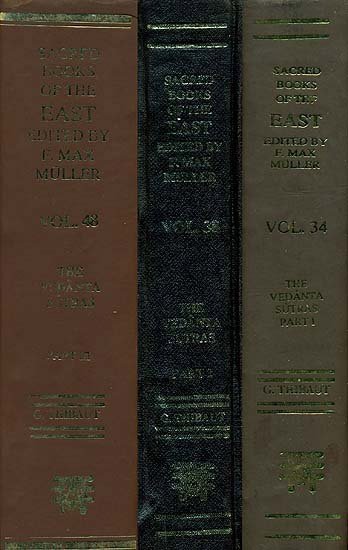Brahma Sutras (Ramanuja)
by George Thibaut | 1904 | 275,953 words | ISBN-10: 8120801350 | ISBN-13: 9788120801356
The English translation of the Brahma Sutras (also, Vedanta Sutras) with commentary by Ramanuja (known as the Sri Bhasya). The Brahmasutra expounds the essential philosophy of the Upanishads which, primarily revolving around the knowledge of Brahman and Atman, represents the foundation of Vedanta. Ramanjua’s interpretation of these sutras from a V...
Sutra 3.2.13
13. Some also (teach) thus.
Moreover, the followers of one śākhā explicitly teach that the connexion with one and the same body is for the individual soul a source of disadvantage, while for the highest Brahman it is nothing of the kind, but constitutes an accession of glory in so far as it manifests him as a Lord and Ruler, 'Two birds, inseparable friends, cling to the same tree. One of them eats the sweet fruit, the other looks on without eating' (Mu. Up. III, 1, 1).—But the text, 'Having entered by means of that jīva-self I will differentiate names and forms,' teaches that the differentiation of names and forms depends on the entering into the elements of the jīva-soul whose Self is Brahman, and this implies that Brahman also, as the Self of the individual soul, possesses definite shapes, divine, human, and so on, and is to be denominated by the corresponding names. Brahman thus falls within the sphere of beings to which injunctions and prohibitions are addressed—such as 'a Brāhmaṇa is to sacrifice'—and hence necessarily is under the power of karman.—To this the next Sūtra replies.
